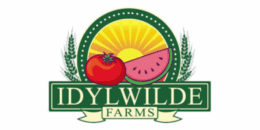June
June 21: A PORCUPINE crosses a log over a N. Acton woodland stream [Thanks to Rebecca Harvey for this and other trail-camera videos.].
July
July13: A SHORT-TAILED WEASEL, its eyes aglow, hunts in a N. Acton hemlock grove.
July 22: A GREAT HORNED OWL perches on a WHITE PINE tree on the outskirts of Pratts Brook Conservation Area.
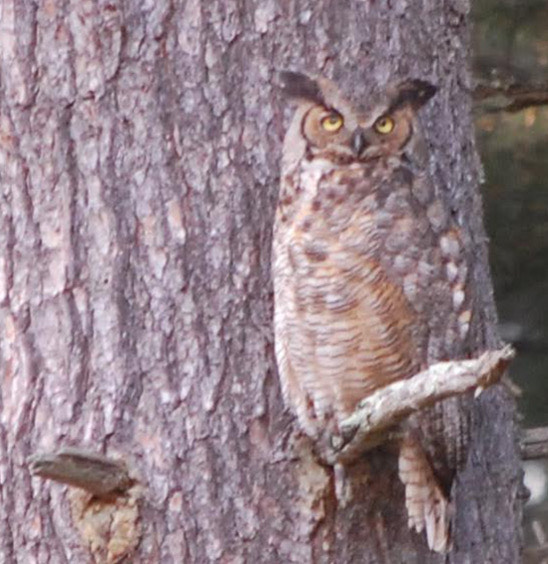
July 23: A native BLUE VERVAIN plant shows its purple glory, surrounded by thousands of invasive PURPLE LOOSESTRIFE flowers in the Fort Pond Brook marsh at the Elm Street end of the Boardwalk.
July 24: COMMON WHITETAIL DRAGONFLIES, a BLUE DARNER, and several other dragonflies patrol Fort Pond Brook vigorously.
July 29: A SMALL CARPENTER BEE glistens green-to-purple on MEXICAN SUNFLOWER blossom in a W. Acton garden.
August
Aug.1: A HERMIT THRUSH sings in Spring Hill Conservation Area, a likely indicator that he nested there this breeding season. Hear Peter Norton’s recording of the bird Henry David Thoreau said “sings out of an ether purer than that I breathe, of immortal beauty and vigor.”
Aug. 2: RED-WINGED BLACKBIRDS vacate marshes beside Fort Pond Brook to migrate south.
Aug. 3: MONARCH BUTTERFLY caterpillars feast on MILKWEED leaves in a W. Acton yard.
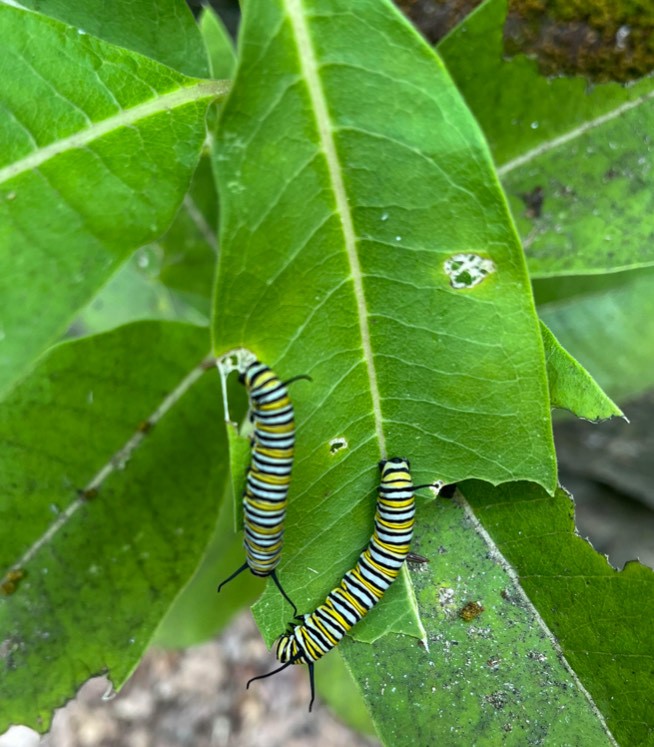
Aug.8: A RED SHOULDERED HAWK pair hunts the Liberty Street area of S. Acton, often descending into the fields of Stonefield Farm. The smaller of the two [the male?] lands in a tree with a GARTER SNAKE hanging limply from a talon. The larger hawk [the female?] swoops in and steals the quarry, prompting the male to take wing. The female eats half of the prize before flying away with the remaining half in the direction of her hunting partner.
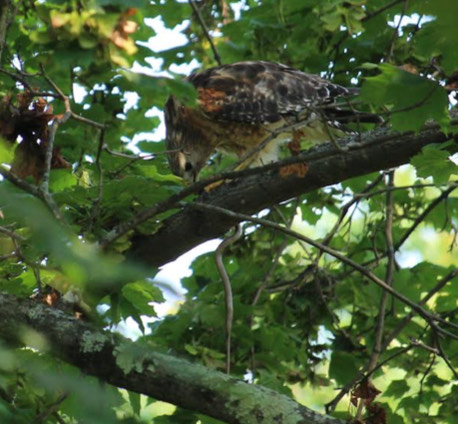
Aug. 9: A TIGER SWALLOWTAIL butterfly samples WILD BERGAMOT flowers in a W. Acton garden.
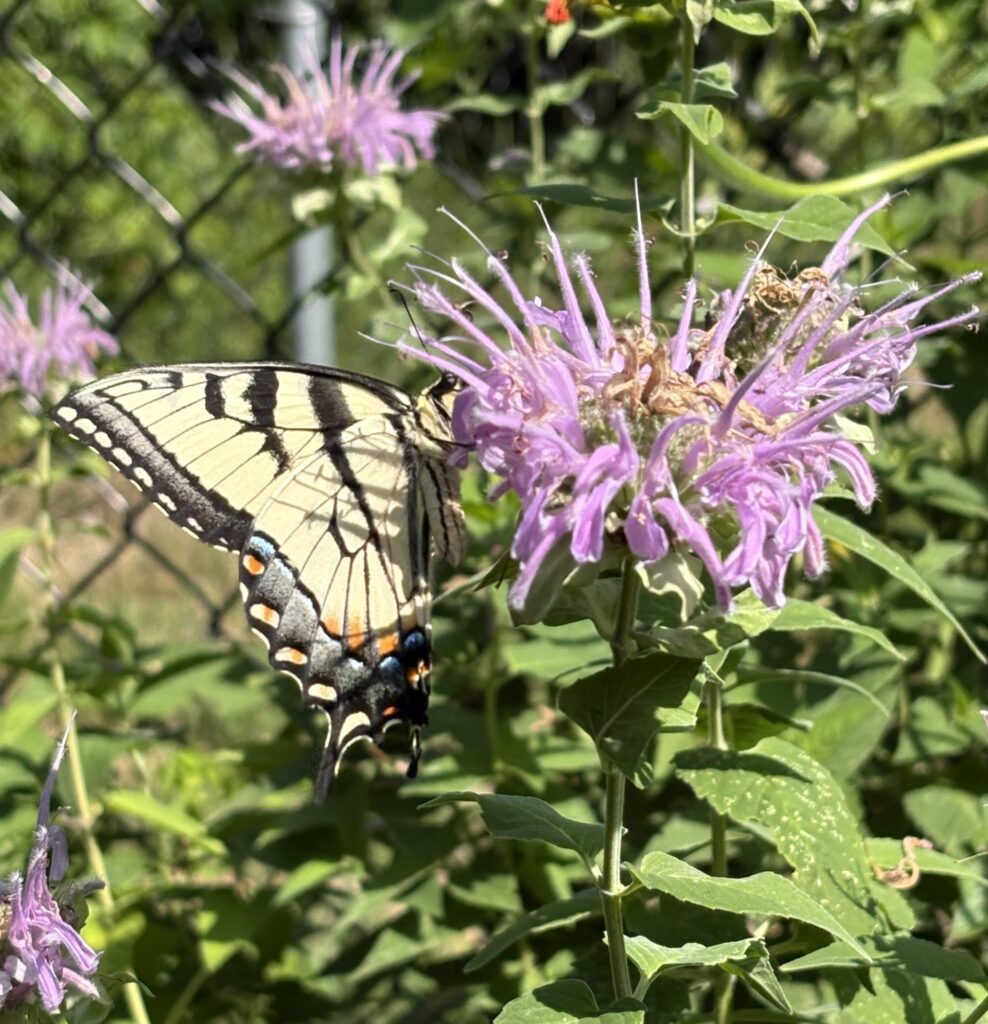
Aug.10: A BEAVER glides through Fort Pond Brook towards the new dam directly under the Boardwalk bridge.
Aug.12: A GREEN STINKBUG methodically crosses a W. Acton car roof and rests on a shady spot.
Aug. 14: Two large BLACK-STAINING POLYPORE fungi (the larger one 30 cm wide) sprout from a shady lawn at Mount Hope Cemetery in W. Acton. The fruiting bodies are firm and well-rooted.
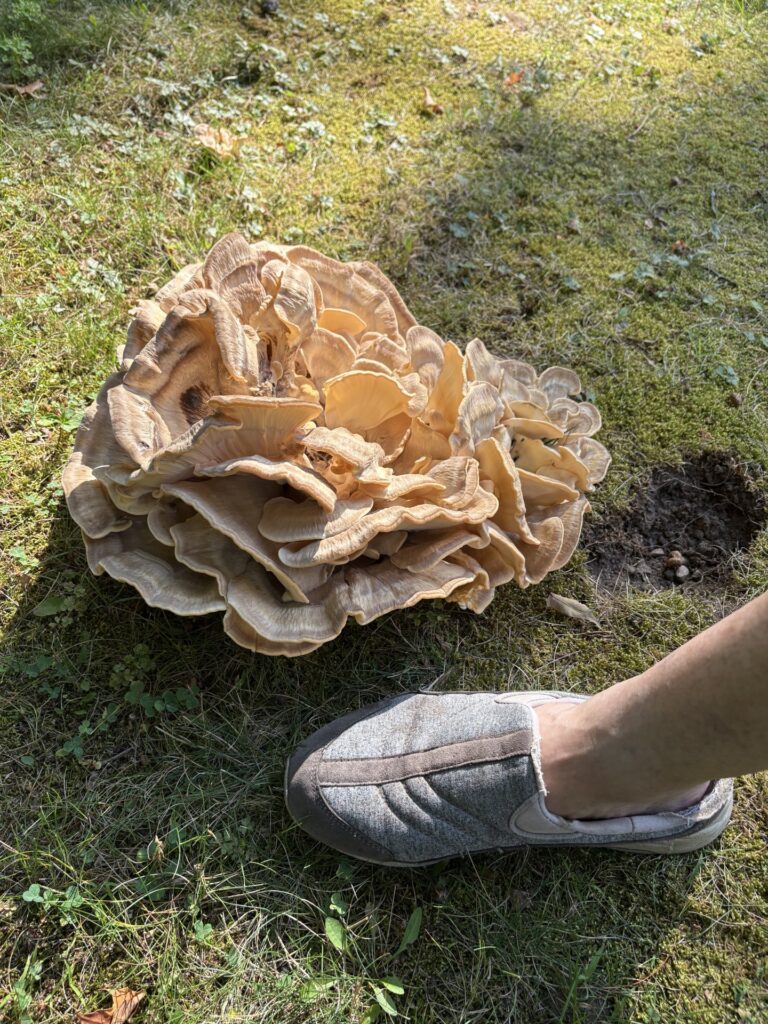
Aug. 21: Immense CLIMACODON fungus fills football-sized hollow in a HORSE CHESTNUT tree on Prospect Street in S. Acton…An AMANITA mushroom shows its toxic parasol on Central Street in S. Acton…A BLACKBERRY LOOPER moth larva puts a thin green smile shape onto a cornflower floret, also on Central Street.
Aug. 22: Seen in a GOLDENROD patch in W. Acton this month: YELLOW JACKET wasps, PAPER wasps, MEXICAN GRASS-CARRYING wasps, BUMBLEBEES, HONEYBEES, EMERALD GREEN SWEAT BEES, HOVERFLIES, and many more.
Aug. 23: GOLDFINCHES chat to each other, heard but not seen amidst abundant plants in W. Acton pollinator garden.
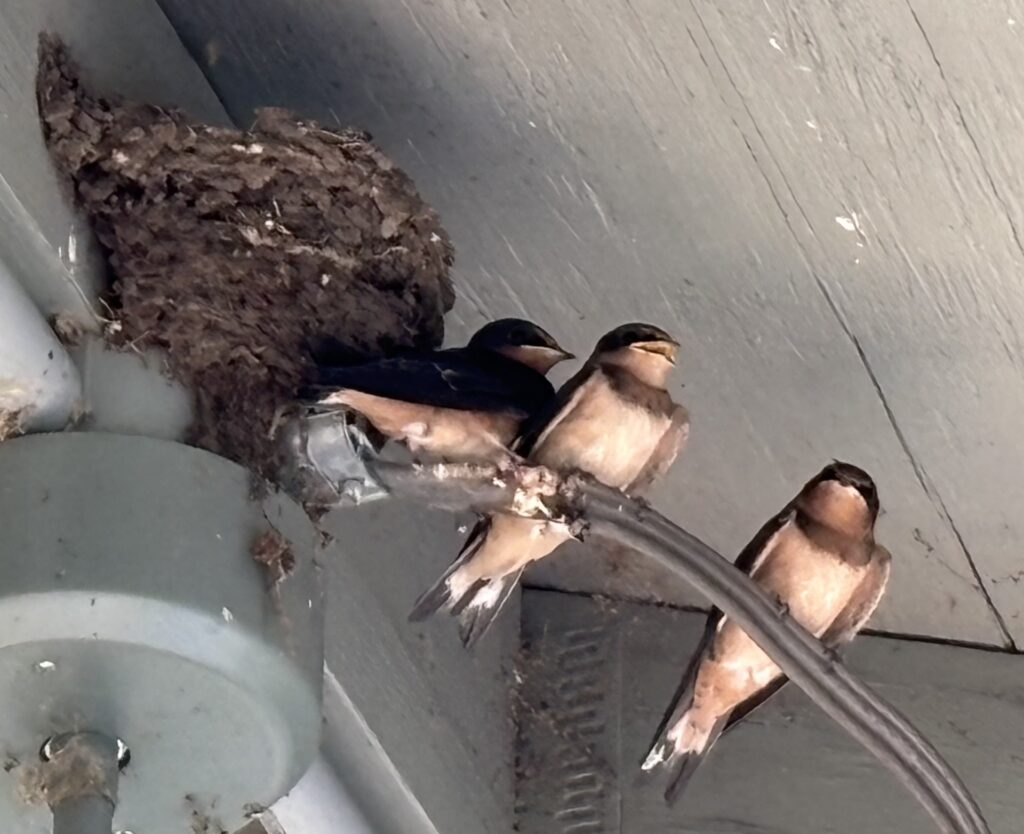
THANKS to Acton Nature Watchers Frann Addison, Rebecca Harvey, Julie Ann Kanics, Kim Kastens, Peter Mosbach, and Peter Norton!
At its next virtual meeting on Tuesday, September 9 at 7 p.m., Green Acton will discuss whether the Town of Acton should ban the use of rodenticides by municipal departments, except during public health emergencies. Nearby towns such as Concord, Maynard, Lexington have already adopted such measures in order to protect hawks, owls, eagles, and other predators from the bio-accumulating toxins. Meetings are open to the public. For the agenda and meeting link, check the Green Acton Announcements page.
Green Acton’s Biodiversity Committee will also focus on how to reduce or prevent SGARs and other rodenticides at its next virtual meeting Thursday, September 18 at 8 PM. For information about the agenda and how to connect, contact biodiversity-contact@greenacton.org.
In the coming month, watch for migrating birds (hawks peak in September); emerging autumn colors in sumacs, poison ivy, and Virginia creeper; oaks dropping acorns and rodents gathering them for winter feeding; and New England asters coming into bloom. Invasives are also worth watching: Japanese knotweed comes into bloom this month, to the delight of honeybees but the dismay of nearly all native plants and animals. Send your observations to actonnaturewatch@gmail.com
Finally, the Massachusetts Department of Agriculture warns that spotted lanternfly (SLF) has been identified in 50 MA cities and towns. Marlborough and Chelmsford are the closest confirmations to Acton. Any sightings yet, nature watchers? If you do see what you think is a SLF, the MDAR offers this information.
Rob Gogan is a West Acton resident and compiles the Acton Nature Watch feature. He is one of the organizers of Green Acton’s new Biodiversity Committee.

